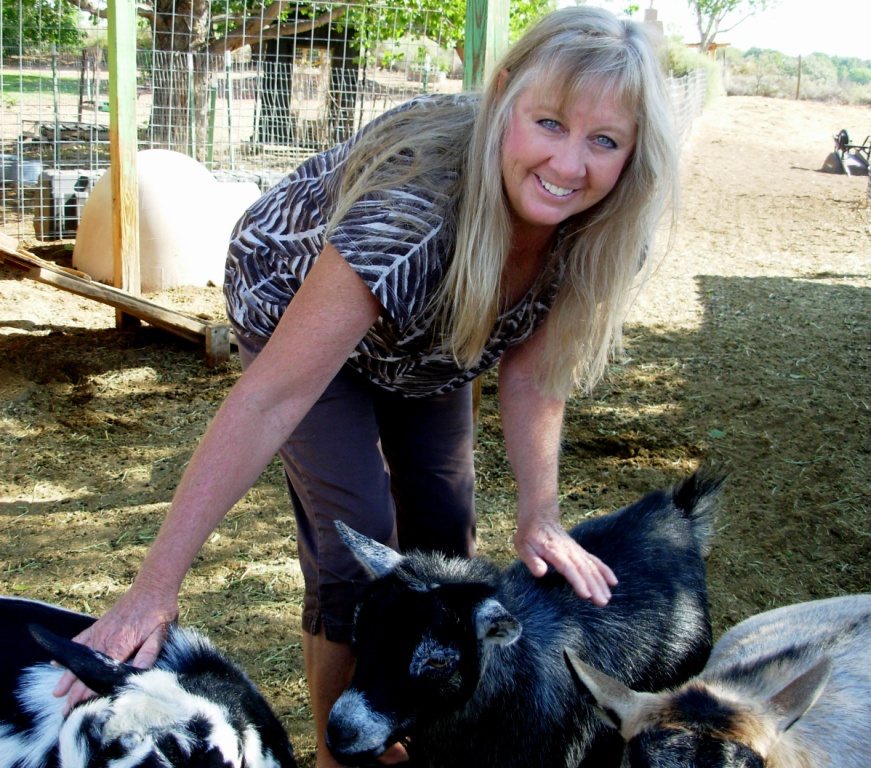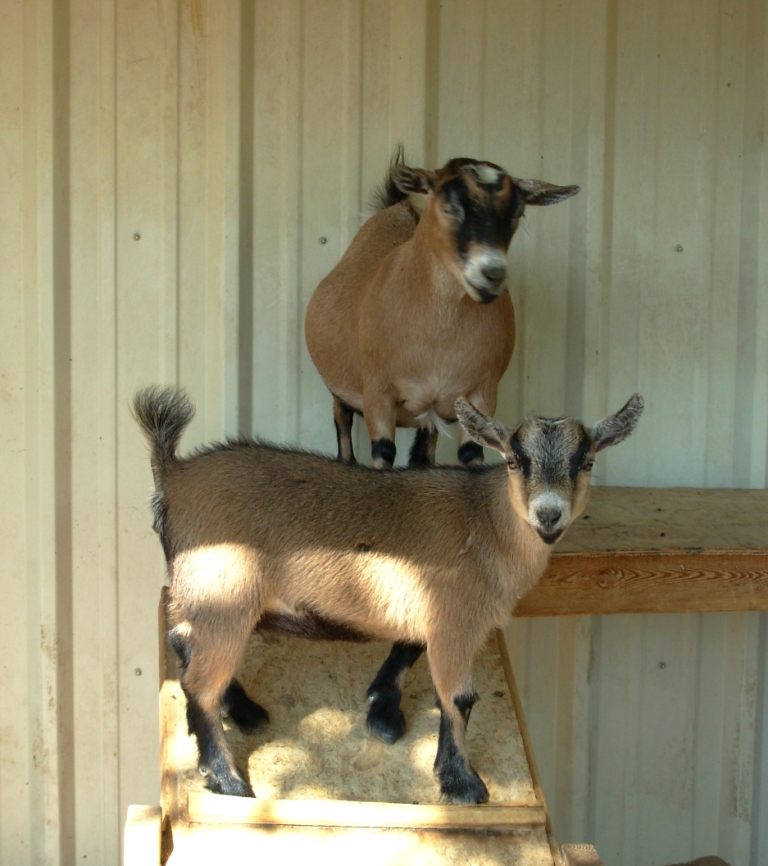
Woman's 'best friend,' the miniature goat feeds and clothes as well as delights
When you think “goat,” chances are the floppy-eared Nubian comes to mind, the classic dairy goat. Or the earless La Mancha. For meat-eaters, there’s the Spanish goat, most likely to meet its end in a Mexican stew. For fiber freaks, it’s the angora goat, with its famously lustrous locks.
None of these come to mind? If every goat you’ve ever laid hands on was a pampered pet, then
two types reign supreme: the Nigerian dwarf and the African pygmy. It’s no secret why these
miniature goats have grown so popular as backyard pets. They’re the cutest darn goats you ever saw.
“Hello, Miss Hawaii!” Renee Furst woos at her barn full of squat, barrel-shaped African pygmy goats, milling about like pigeons. “Where’s your daughter Kona?” The goats flee at our approach, only to turn around and sniff cautiously in our direction. Within minutes they’re rubbing their dehorned heads against our legs and begging for attention, like the family dog. And they’re just as insistent.
“With goats I say you can’t have just one—they’re like potato chips,” says the cheerful Furst, a real estate agent who is clearly crazy about her small herd of about 15 goats, most of them pygmies plus a few Nigerian dwarfs. The owner of Corrales Kids Ranch on Loma Larga Road and a registered goat judge, Furst knows a good-looking goat when she sees one.
Pygmy goats, like every other breed, have certain standards that judges look for in awarding ribbons at competition. There’s no real money in winning, certainly not enough to cover the costs of keeping goats in show shape. Yet, for Furst, winning is the thing. It makes her goats desirable to buy, tests her mettle as an expert, and—so plain to see and hard to express—fills her heart with gladness to raise herd after herd of perfect animals. Perfectly correct, that is.
As she moves about the barn preparing feed (alfalfa, minerals, and grain for the nursing does
and kids), the animals follow her expectantly, the darling 8-month-olds scampering like kittens. In a separate pen outside live the three champion bucks, who get most of the credit for award-winning offspring. “You can have so-so does,” Furst confides. “It’s all about correct structure in the buck.”
Dark and hairy as miniature yaks, the bucks reveal nothing of their elevated status to the untrained eye. All three are Permanent Grand Champions, registered purebreds that have won
four champion titles (best of all classes). A goat with this title can go on to compete for best
in the state (Master Grand Champion, of which Furst has the only one in New Mexico), or a
national trophy. One year, Furst had a doe and buck reach National Champion status.
Inside the house, Furst displays her trophy room, completely lined with ribbons and trophies,
plus an “overflow” room with a wall of ribbons. She proudly pulls out the thick binders that
spell out the rules for goat judging. While she specializes in pygmies, Furst also judges for the American Goat Society, which includes all breeds. “It’s a lot of information you have to know
and spit out at the microphone,” she explains. “Breeders know a lot about the standards, and
they’re going to say something if I get it wrong.”
Her life as a goat judge and competitor involves constant travel, for a quick night or two to
judge, many more to compete. Showing means loading a half dozen goats into her large trailer
after they are groomed, clipped, and coached.
Raised in Albuquerque, Furst moved to Corrales in 1975 and built her first home here in 1979.
In 1993 she saw pygmy goats at the State Fair, “and I thought it would be nice, they could help me with the tumbleweeds.” She joined the Pygmy Goat Association, then thought it might be nice to breed her weed-eaters.
“I had a young daughter then, and she learned a lot of good things,” Furst adds. “She’s won so many trophies for showmanship,” and even considered being a vet before studying to become a registered dietician. Furst still does the goats’ veterinary care herself, from shots to disbudding (of horns). “Except for C-section,” she adds. “Which is rare now that I breed for rear ends at the right angle, so they can shoot them out.”
Outside in the goat barn, the animals are surprisingly reluctant to cross the chain-link fence
into the grassy yard. “They love their barn,” Furst notes. They have a sheltered play area outside that mimics a hillside, where they can play King of the Hill, the kids leaping off the platform comically on all fours. Furst says they easily learn their names and how to walk on a lead, and are gregarious when socialized from infancy.

“I want them to be friendly, and when you get a larger herd, how often do you get to pet them?” So she keeps her herd small, and usually has a dozen to twenty kids each spring; this year she had only five, of which she kept all but one to rear as a breeding adult. Ruminants like cattle, goats are sold at about 8 weeks, after they have developed the second stomach compartment and can digest solid food. The females grow rounder every year as they age into “queen” status, making pygmy milk rich in fat and prized by many.
Goats are classified into dairy, meat, or fiber breeds, but many have been used for all three.
“Weed-eating pet” is a relatively recent purpose, but the adaptable goat is proving to be just as
valuable to humans with contemporary needs for companionship. “They’ll make friends with
your dogs or ducks,” says Furst, but will languish from loneliness without some kind of herd.
That’s why you can never have just one.
And it’s why you will generally find pygmy goats in pairs, hidden by their low stature in a neighboring yard. Hardy, affectionate, amusing, and easy to keep if you have a guard dog (or donkey, or llama), this is henceforth the bundle of love that will come to mind—rather than milk, meat, or fiber—when you think “goat.”
For more information: www.npga-pygmy.com.
